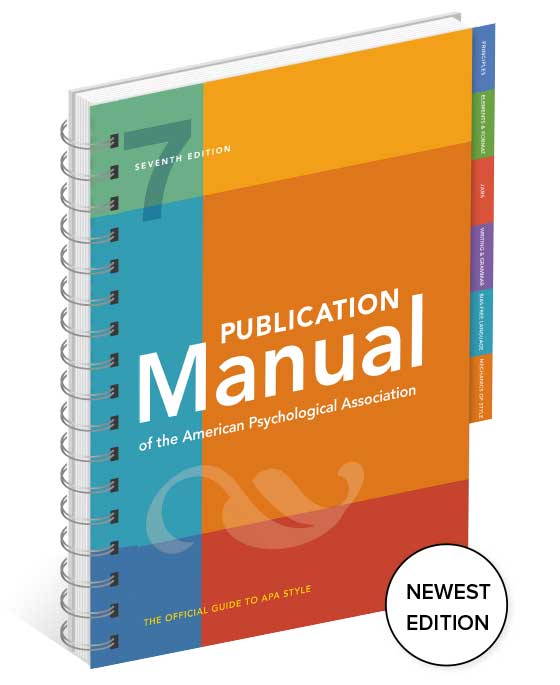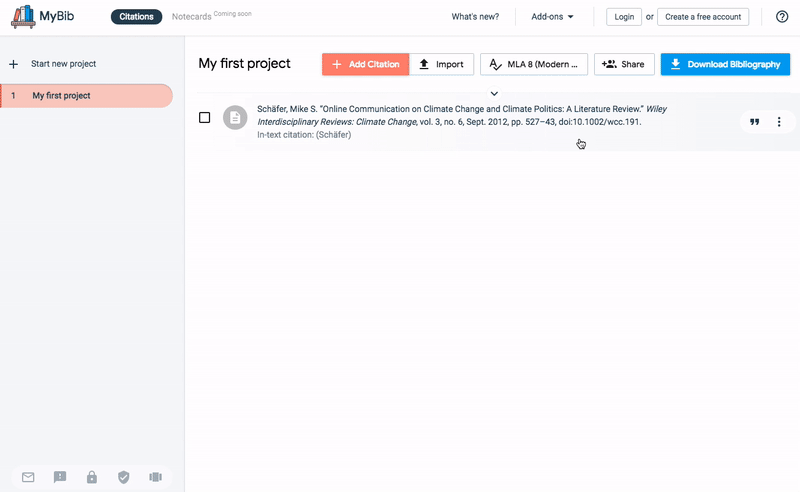🧠 APA Style 7th Edition: The Changes You Need To Know


The American Psychological Association has announced the newest version of their publication manual: the 7th edition. It was officially released in October, arriving just over 10 years since the 6th edition was published. Here are the main changes you need to know about:
Reference list and citations
Fundamentally not much is changing to the way citations are formatted, so if you are comfortable with writing citations according to the 6th edition rules then it should be a smooth segue into the 7th edition. Here are the most notable changes:
- Website URLs no longer need to be preceded with "Retrieved from" unless there is also a retrieval date.Kluger, J. (2019, July 18). Elon Musk told us why he thinks we can land on the Moon in ‘less than 2 years.’ Retrieved from Time website: https://time.com/5628572/elon-musk-moon-landing/Kluger, J. (2019, July 18). Elon Musk told us why he thinks we can land on the Moon in ‘less than 2 years.’ Time website: https://time.com/5628572/elon-musk-moon-landing/
- Ebooks no longer require the type of ebook to be listed (e.g. PDF, Kindle etc)Green, J. (2018). The fault in our stars [Kindle Version]. Retrieved from: https://www.amazon.com/Fault-Our-Stars-John-Green-ebook/dp/B007Z8ZKS2/Green, J. (2018). The fault in our stars. https://www.amazon.com/Fault-Our-Stars-John-Green-ebook/dp/B007Z8ZKS2/
- Journal DOIs are now displayed as a doi.org URL instead of with the "DOI:" prefix.Patel, V., & Jenkins, R. (2012). Putting evidence into practice: the PLoS Medicine series on global mental health practice. PLoS Medicine, 9(5), 44. DOI: 10.1371/journal.pmed.1001226Patel, V., & Jenkins, R. (2012). Putting evidence into practice: the PLoS Medicine series on global mental health practice. PLoS Medicine, 9(5), 44. https://doi.org/10.1371/journal.pmed.1001226
- The publisher location is no longer required for books or similar mediums.Salinger, J. D. (2001). The catcher in the rye (pp. 23--24). New York: Back Bay Books.Salinger, J. D. (2001). The catcher in the rye (pp. 23--24). Back Bay Books.
- Up to 20 authors can now be included in a reference list entry before needing to omit others with an ellipsis. Previously, only six would be displayed before omitting the rest with an ellipsis.Foster, M., Thompson, A., Perez, G., Moore, D., Torres, G., Peterson, H., … Cox, W. (2018) Title...Foster, M., Thompson, A., Perez, G., Moore, D., Torres, G., Peterson, H., Foster, M., Thompson, A., Perez, G., Moore, D., Torres, G., Peterson, H., Foster, M., Thompson, A., Perez, G., Moore, D., Torres, G., Peterson, H., Foster, M., … Cox, W. (2018) Title...
- As for in-text citations, any reference with more than three authors can now be shortened to the first author and et al. Previously only references with six or more would be shortened this way.It is believed that only 55% of bibliographic data is correctly located by Google Scholar (Zeitlyn, Beardmore-Herd, Hinrikus, Hook, 2018)It is believed that only 55% of bibliographic data is correctly located by Google Scholar (Zeitlyn et al., 2018)
- Guidelines and citation examples are being added for newer information sources that have emerged or grown in popularity since the 6th edition, like social media messages and videos, and other electronic mediums.
Punctuation and layout
The manual now states to always use a single space after any body-text punctuation, whether it is at the end of a sentence or not. In the 6th edition, two spaces would be required at the end of a sentence, while a single space would be used after punctuation that was not at the of a sentence. Other important changes include:
- The term Running head: should no longer be prefixed to the running head on the title page. Now, only the actual title and a page number (typically 1) should be used.
- Heading fonts sizes for levels 3 through 5 have been changed to make them easier to read.
- APA style 6th edition requires the Times New Roman font in 12pt size, which is a relatively small serif font that can be hard to read. But font lovers rejoice! -- The 7th edition adds Calibri size 11pt, Arial 11pt, Lucida Sans Unicode 10pt, and Georgia 11pt as allowed fonts.💡 A serif font is one with extra strokes or curly lines added to each letter. A sans-serif font is a simpler font without these extra strokes. The font on this page is a sans-serif font, while Times New Roman is a serif font.
Bias-free language
- Guidelines are being added to use bias-free language when referring to people or entities. This means using the word “they” or “their” instead of gender pronouns like “he”, “she”, “his” and “her”.
- Descriptive phrases should be preferred instead of nouns to label people.
Samples
Students new to writing and citing in APA style will be pleased to see complete examples demonstrating visually how to lay out a paper in the 7th edition style. This includes the title page, main body, bibliography, and any other nuances. We also have this information available in our APA Format Guide, and our APA Citation Generator is there to help you format your citations.
When will APA 7th Edition begin to be used?
The American Psychological Association is not expecting to see the 7th Edition used in practice until Q2 in 2020. And as a student, you should always check with your professor or teacher whether they're expecting the 7th edition, or the 6th edition.


